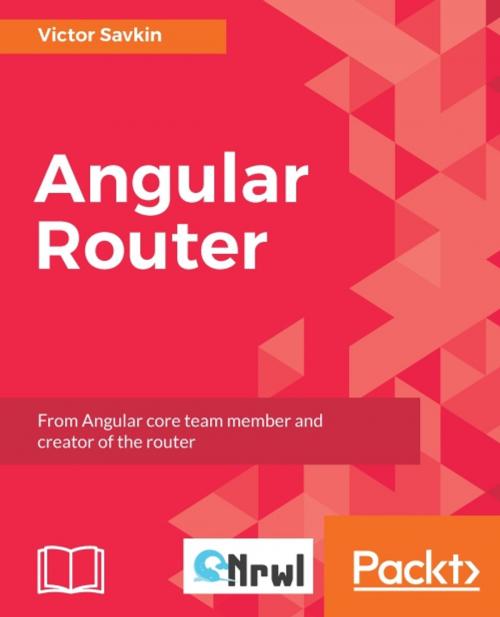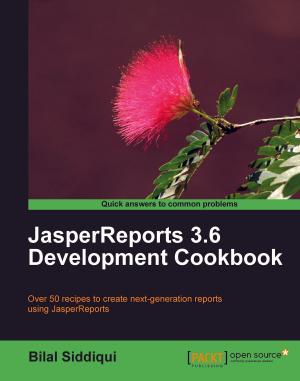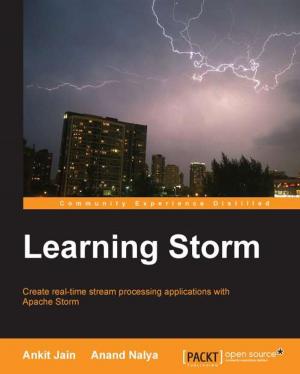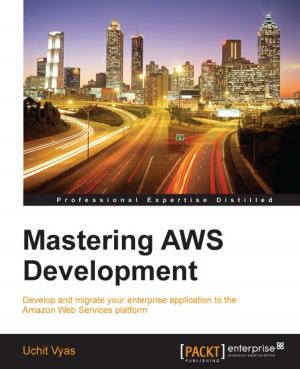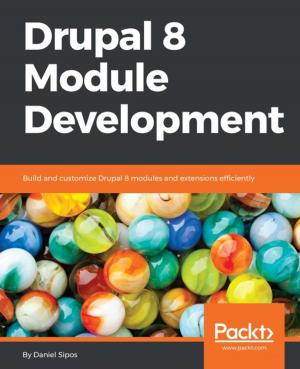| Author: | Victor Savkin | ISBN: | 9781787287150 |
| Publisher: | Packt Publishing | Publication: | March 22, 2017 |
| Imprint: | Packt Publishing | Language: | English |
| Author: | Victor Savkin |
| ISBN: | 9781787287150 |
| Publisher: | Packt Publishing |
| Publication: | March 22, 2017 |
| Imprint: | Packt Publishing |
| Language: | English |
From Angular core team member and creator of the router
About This Book
- Written by the creator of the Angular router, giving you the best information straight from the source
- Get full coverage of the entire Angular Router library and understand exactly how every command works
- Essential for all serious users of Angular who need to manage states within their applications
Who This Book Is For
To get the most from this book, you should already have a good understanding of Angular and general web development.
What You Will Learn
- Understand the role of the Angular router and how to make the most of it
- Build and parse complex URLs
- Learn about the componentless and empty-path routes
- Take control of states in your application
- Make use of imperative navigation
- Understand guards and how they can benefit your applications
- Optimize configuration and run tests on your routing
In Detail
Managing state transitions is one of the hardest parts of building applications. This is especially true on the web, where you also need to ensure that the state is reflected in the URL. In addition, you might want to split applications into multiple bundles and load them on demand. Doing this transparently isn't easy. The Angular router solves these problems. Using the router, you can declaratively specify application states, manage state transitions while taking care of the URL, and load bundles on demand.
This book is a complete description of the Angular router written by its designer. It goes far beyond a how-to-get-started guide and talks about the library in depth. The mental model, design constraints, and the subtleties of the API-everything is covered. You'll learn in detail how to use the router in your own applications. Predominantly, you'll understand the inner workings of the router and how you can configure it to work with any edge cases you come across in your sites.
Throughout the book, you'll see examples from real-world use in the MailApp application. You can view the full source of this application and see how the router code works to manage the state of the application and define what is visible on screen. Reading this book will give you deep insights into why the router works the way it does and will make you an Angular router expert.
Style and approach
This is an extremely practical book full of code examples and descriptions to help you understand the inner workings of the Angular router.
From Angular core team member and creator of the router
About This Book
- Written by the creator of the Angular router, giving you the best information straight from the source
- Get full coverage of the entire Angular Router library and understand exactly how every command works
- Essential for all serious users of Angular who need to manage states within their applications
Who This Book Is For
To get the most from this book, you should already have a good understanding of Angular and general web development.
What You Will Learn
- Understand the role of the Angular router and how to make the most of it
- Build and parse complex URLs
- Learn about the componentless and empty-path routes
- Take control of states in your application
- Make use of imperative navigation
- Understand guards and how they can benefit your applications
- Optimize configuration and run tests on your routing
In Detail
Managing state transitions is one of the hardest parts of building applications. This is especially true on the web, where you also need to ensure that the state is reflected in the URL. In addition, you might want to split applications into multiple bundles and load them on demand. Doing this transparently isn't easy. The Angular router solves these problems. Using the router, you can declaratively specify application states, manage state transitions while taking care of the URL, and load bundles on demand.
This book is a complete description of the Angular router written by its designer. It goes far beyond a how-to-get-started guide and talks about the library in depth. The mental model, design constraints, and the subtleties of the API-everything is covered. You'll learn in detail how to use the router in your own applications. Predominantly, you'll understand the inner workings of the router and how you can configure it to work with any edge cases you come across in your sites.
Throughout the book, you'll see examples from real-world use in the MailApp application. You can view the full source of this application and see how the router code works to manage the state of the application and define what is visible on screen. Reading this book will give you deep insights into why the router works the way it does and will make you an Angular router expert.
Style and approach
This is an extremely practical book full of code examples and descriptions to help you understand the inner workings of the Angular router.
